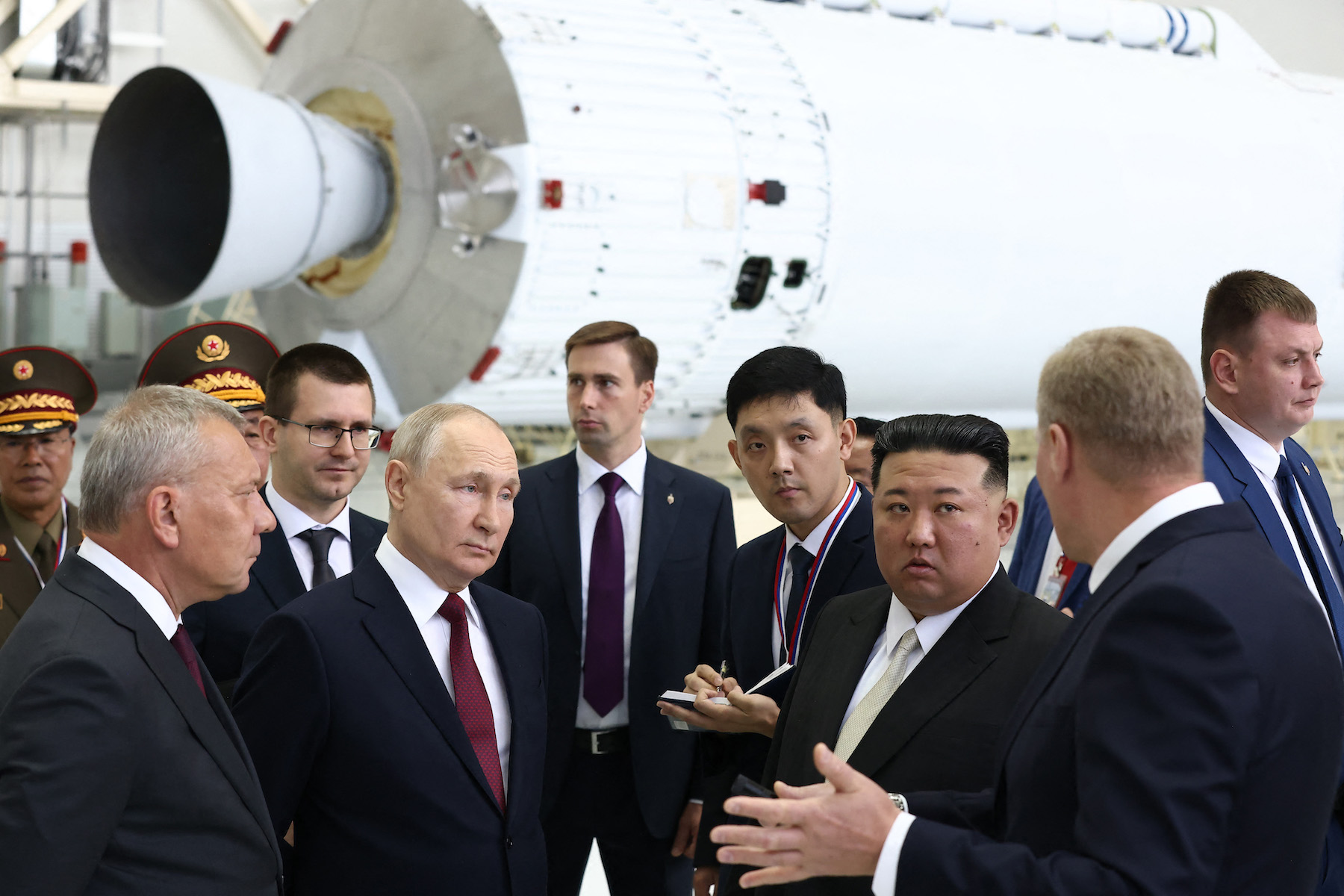Russian President Vladimir Putin will reportedly visit North Korea later this month, and you can bet collaboration on missiles and space programs will be on the agenda.
The bilateral summit in Pyongyang will follow a mysterious North Korean rocket launch on May 27, which ended in a fireball over the Yellow Sea. The fact that this launch fell short of orbit is not unusual—two of the country's three previous satellite launch attempts failed. But North Korea's official state news agency dropped some big news in the last paragraph of its report on the May 27 launch.
The Korean Central News Agency called the launch vehicle a "new-type satellite carrier rocket" and attributed the likely cause of the failure to "the reliability of operation of the newly developed liquid oxygen + petroleum engine" on the first stage booster. A small North Korean military spy satellite was destroyed. The fiery demise of the North Korean rocket was captured in a video recorded by the Japanese news broadcaster NHK.
Petroleum almost certainly means kerosene, a refined petroleum fuel used on a range of rockets, including SpaceX's Falcon 9, United Launch Alliance's Atlas V, and Russia's Soyuz and Angara.
“The North Koreans are clearly toying with us," said Jeffrey Lewis, a nonproliferation expert at the Middlebury Institute of International Studies. "They went out of their way to tell us what the propellant was, which is very deliberate because it’s a short statement and they don’t normally do that. They made a point of doing that, so I suspect they want us to be wondering what’s going on."
Surprise from Sohae
Veteran observers of North Korea's rocket program anticipated the country's next satellite launch would use the same Chollima-1 rocket it used on three flights last year. But North Korea's official statement suggests this was something different, and entirely unexpected, at least by anyone without access to classified information.





 Loading comments...
Loading comments...
